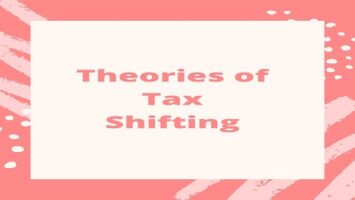Table of Contents
Short Note on Borrowing:
A sound programme of public borrowing and repayment, popularly called public debt is a patent fiscal weapon to fight inflation and deflation and to bring about economic stability and full employment. The government borrowings may assume any of the following forms. It should also be clearly stated that borrowings are generally resorted to cover budget deficits.
- Borrowings from Non-bank public.
- Borrowings from the banking system.
- Drawing from the treasury.
Borrowings from Non-bank Public:
If government borrows from the public through the sale of bonds, money may flow either out of consumption or saving or private investment or hoarding. If the bond-selling device of the government induces people to cut all their consumption, the borrowings are likely to be non-inflationary. Since, it reduces private consumption expenditure and increases public expenditure, which is generally made for productive purposes.
When the money for the purchase of bonds flows from already existing savings. It may again be non-inflationary. When the government is not borrowing, these funds would have been utilized for private investment. Thus, the debit operations of the government will simply bring about, a diversion of funds from one channel of spending to another with the same quantitative effects on national income. It means that the debt operations of the government do not bring about any significant change in the total volume of expenditure or more specifically, investment expenditure (both in private and public sectors).
If government bonds are purchased by non-bank individuals and institutions by drawing upon their hoarded money, there will be a net addition to the circular flow of spending. Since it brings about new money into circulation, which was hitherto inactive. Consequently, inflationary pressure is likely to be created. But, funds from this source are not generally available in any large quantity. Hence, inflationary pressure generated as a result of drawing upon hoarded money may not be of a significant magnitude. Therefore, it can be concluded that borrowings from the non-bank public whether come out of conception, savings or private investments, or hoarding is generally non-inflationary and may be restored during inflation for productive purposes, especially wage goods, and it may have undesirable effects during the depression.
Borrowings from the Banking System:
The government may also borrow from the banking institutions. However, such borrowings are inflationary in nature. Therefore, borrowings from banking institutions can be highly effective in removing the conditions of depression. During depression, banks have excessive cash reserves, and the private business community or the investing community is not willing to borrow from banks, since they consider it unprofitable. When unused cash lying with banks is lent out to the government, it causes a net addition to the circular flow and tends to raise national income and employment. Thus, borrowing from banking institutions have desirable effects during the Depression, more particularly when the borrowed funds are utilized on public works programmes.
But, borrowings from the banking system are not possible in times of brisk business activity, i.e., boom. The demand for funds is very high in times of inflation since expectations for profits in business are high. The bank loan out to their maximum capacity. The banks have no excess cash reserves and find it difficult to lend to the government. They can do so only by reducing their loans somewhere else. This will amount to a fall in private investment. Thus, the increase in government spending is offset by a reduction in private investment, there will be no effect on national income and employment. Thus, it can safely be concluded that borrowings from banking institutions have desirable effects only during the depression and may have undesirable effects or neutral effects in times of inflation.
Drawing From Treasury:
The government may draw upon the cash balances held in the treasury for financing the budgetary deficit. Since it amounts to dishoarding, it causes a net addition in the supply of money. Since it increases the supply of money or causes a net addition in the circular flow of money, it is likely to be inflationary in nature. Hence, this sort of borrowing is desirable during the depression and may have undesirable effects during inflation. But, generally, there are small balances over and above what is required for normal day-to-day operations. Therefore, such borrowings do not have any significant effect.
Conclusion:
Finally, it can be concluded that, in a period of inflation, public debt has to be managed in such a way so as to reduce the money supply in the economy and curtail credit expansion. New borrowing from banking institutions, drawing upon cash balances held in treachery, and drawing upon hoarded money held by non-bank individuals and institutions shall have to be altogether avoided. Rather the Government will do well to retire this kind of debt through a budget surplus. During the depression on the other hand taxes are reduced and public expenditures are increased through budget deficits, which are financed by borrowings from the public hoarded money, commercial banks, or the Central Bank of the country, i.e., drawing upon cash balances held in the treasury. Thus, borrowing of idle funds will have no adverse effects on consumption and on investment, during the depression, it is very difficult to retire this kind of public debt. Actually, it pays to accumulate debt of commercial banks and the Central Bank and of hoarded money of individuals during the depression and redeem it during a period of expansion. Along with this, the monetary authority (the Central Bank) must aim at low bank rate to keep the burden of debt low. Thus, public debt becomes an important tool of anti-cyclical phenomena. It should be clearly understood that the above analysis is true for developed countries like the USA and the United Kingdom not for developing countries like India.









Comments (No)